Pismo Beach, California —(Map)
Every year, butterfly lovers in California go out in November to count monarch butterflies. The 2018 count had a very worrying result – monarch numbers had dropped by 86% since 2017.
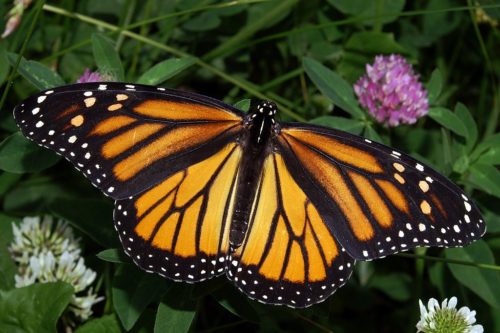
(Source: Kenneth Dwain HarrelsonCC BY-SA 3.0], (via Wikimedia Commons.)
The orange and black monarch butterflies are famous for their long migrations – they fly thousands of miles every year. In the spring and summer they fly north; in the fall they fly south again. Eastern monarchs fly to Mexico for the winter. Western monarchs fly to California.
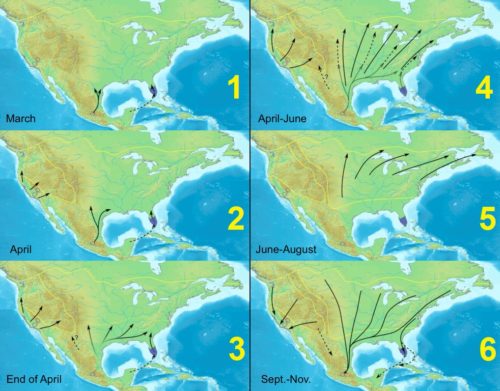
(Source: Based on MonarchWanderungKlein.gif: Harald Süpfle/B kimmel [CC BY-SA 3.0], via Wikimedia Commons.)
Monarchs, like most butterflies, are very important for plants. By spreading a dust called pollen between plants, monarchs help plants create seeds, which can then create more plants.
In turn, monarchs depend on plants. They gather sweet nectar from flowers for food. They rest and spend their winters in trees. And they depend completely on a plant called milkweed to lay their eggs. Monarch caterpillars eat the leaves of the milkweed plant as they grow.
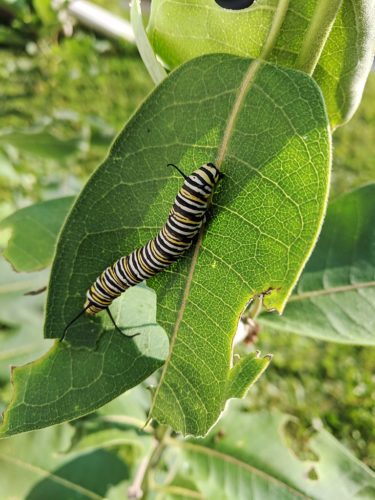
(Source: USFWS Midwest Region [CC BY 2.0], via Wikimedia Commons.)
But monarchs have been facing growing problems for years. As more and more wild land has been turned into large farms, the monarchs have had trouble finding enough milkweed. Many farms also use chemicals that kill insects in order to protect their plants. These chemicals, called pesticides, also affect monarchs.
Human pollution has created other challenges. Pollution has made milkweed less healthy for the monarchs than it used to be. Climate change has raised temperatures. The hotter temperatures not only kill plants, they bring dry weather that leads to forest fires like the ones faced in California last year, killing important trees. The changes in temperature also make it harder for the monarchs to know when they should be traveling.
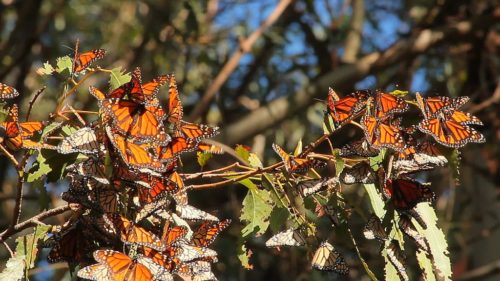
(Source: Pacific Southwest Region USFWS , via Wikimedia Commons.)
Monarchs all over the world are facing many of these challenges. Experts are worried about monarch numbers all over the US and as far away as New Zealand. But the results discussed in this article are for the western monarchs, which spend the winter in California.
Every fall, a group called the Xerces Society counts monarch butterflies in California. All the results are not in yet, but so far, it doesn’t look good. In some of the most popular areas for monarchs, they found around 20,500 monarchs. In those same areas a year ago, they found 148,000.
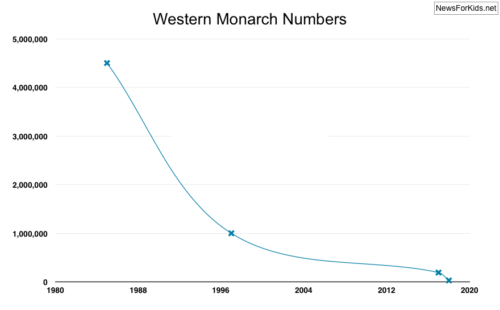
(Source: NewsForKids.net [CC BY-SA 4.0].)
Worse, the numbers for 2017 were not good numbers to start with. Since the 1980s, when there were at least 4.5 million monarchs, the numbers had already dropped about 97%. Scientists say that if nothing changes, it’s likely that monarchs will come close to dying out in the next 20 years.
Things that people can do to help include planting milkweed, controlling the use of pesticides, protecting wild areas, and planting trees.
😕
This map has not been loaded because of your cookie choices. To view the content, you can accept 'Non-necessary' cookies.
